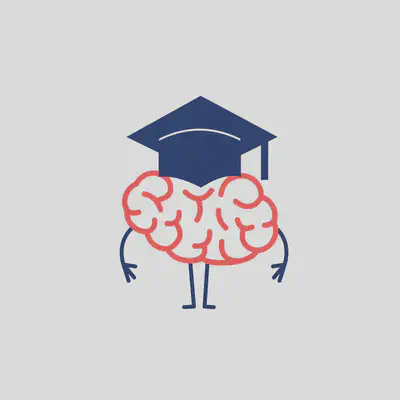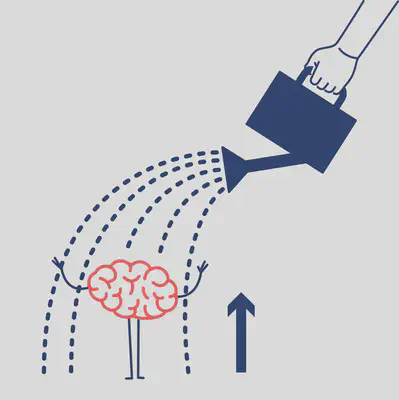Boosting FAQ
Frequently Asked Questions about Boosting
Table of Contents
What is “boosting”?

Boosting is a policy approach that targets people’s competences and thereby helps people make good, informed decisions by and for themselves.
A boost is an intervention that enlists human cognition, the environment, or both to foster people’s existing competences or develop new ones.
See here for more information about boosts.
What types of boosts are there?
See here for the different types of boosts.

How is boosting different from institutional education?
Boosting interventions can be seen as a particular form of education. At the same time boosting differs from institutional education in several important ways. The following list (adapted from Hertwig & Grüne-Yanoff, 2017, p. 982) summarizes those differences:
- Knowledge vs. competence: The primary goal of boosts is not to offer accurate declarative knowledge and cultural skills such as reading, writing, grammar, and algebra. Instead, boosts offer competences in domains that are not typically addressed in institutional curricula, such as good financial decision making, accurate risk assessment, healthy food choices, informed medical decisions, and effective self-regulation.
- Behavioral science: Boosts, like nudges, should be informed by evidence from the behavioral sciences. This is not necessarily the case for what is taught in educational institutions.
- Time contraints: Boosts aim to foster or develop new competences under conditions of limited time and resources (on the part of the target audience and the policy makers) and typically in an adult citizenry that cannot be subjected to years of additional schooling.
- Doing vs. knowing: The focus of boosts is typically on actionable motivational and decisional competences (e.g., procedural routines, heuristics, goal implementation skills) and not on information per se.
- The right moment: Boosts are often “just-in-time” interventions, whereas institutional education is scheduled. In all likelihood, people are most motivated to develop a new competence when they experience a specific need for it.
- Personal agency: Boosts preserve and enable individuals’ personal agency and autonomy. (Granted, if boosts were included in a mandatory school curriculum, the autonomy of the student would be curtailed.)
How is boosting different from nudging?
Nudging involves making small changes to a specific environment to steer people towards a specific behavior. For example, making a salad the default side dish in company canteens nudges people towards a healthier lunch at work, but has presumably little effect on what they decide to eat when they go out for dinner.
Boosting targets people’s competences, which can be used in many other contexts. The focus lies on teaching skills that promote lasting and generalisable changes in judgment and decision-making competences.
Both nudging and boosting can be effective interventions, but which approach or combination works best depends on the application (see the example of a comparative tests of a boost and a nudge for improving hand hygiene). See this checklist for policy makers, which helps assessing whether nudging, boosting, or a combination is likely to work.
Can boosting and nudging interventions be combined?
Whether we want to improve our eating habits, invest wisely, or foster self-control, there are many aspects of life in which both boosts and nudges could play a role. Sometimes boosts and nudges could even be combined. Boosts, for instance, aim to increase citizens’ competences. Their focus lies on teaching skills that promote lasting and generalizable changes in judgment and decision making competencies. Nudges, in contrast, involve making changes to the environment in order to steer people towards a specific behavior.
But boosts and nudges can also be used together. For example, self-nudging is a combination of boosting and nudging: Citizens are empowered to use nudges to restructure their own decision-making environments. By nudging themselves, they become their own choice architects.
Many nudges can be converted into self-nudges—for more examples, take a look at this list of self-nudges. For self-nudges that can be used in online environments, check this link. There is also a blog-post on “Using self-nudging to make better choices” you can check out.
When do boosting interventions work?

Boosts can be used to promote better decision-making in many different contexts. A key requirement is that the targeted population of the boost intervention is motivated and able to improve their decision-making by acquiring a new skill or deepening skills they already have.
Boosting has successfully been applied in areas such as medicine, finance, and health to help people invest wisely, establish healthier eating behaviors, and determine the risk of side effects associated with their treatment options (see also the boosting domains).
However, boosting requires the cooperation of those whose decision-making competences are to be boosted—not only during the intervention, but also when the new competences will need to be applied in practice. Boosting is not an appropriate approach for individuals who cannot or do not want to change their behavior.
Why should I care about boosting? Can’t we just use nudges?

Boosting and nudging are not interchangeable, although there are circumstances where either type of intervention (or both) could be appropriate. Boosting holds several key advantages over nudging, such as autonomy and transparency. Boosting aims to preserve autonomy and human agency by targeting competences rather than immediate behavior and, because a boost only works if people are willing to engage with it, boosting interventions are necessarily transparent.
Hertwig (2017) suggests the following guidelines to assess whether boosting, nudging, or their combination might be more promising:
- If individuals lack the cognitive ability or motivation to acquire new skills or competences, then nudging is likely to be the more efficient intervention.
- If policy-makers are uncertain about people’s goals, if there is marked heterogeneity of goals across the population or if an individual has conflicting goals, then boosting is the less error-prone intervention.
- If the working of a nudge requires it to be non-transparent or even invisible to the person being nudged, then it fails the easy-reversibility test and is paternalistic.
- If governments do not (always) act benevolently, or if they permit the private sector to create “toxic” choice architectures, then boosting will provide better protection for individuals.
- If the policy-maker aims to foster generalisable and lasting behaviours, boosting seems, ceteris paribus, to be more expedient.
- If there is substantial danger of unanticipated (unpredictable) and undesired consequences of a nudging or boosting intervention, then consider the respective alternative.

Where can I learn more about boosting?
- Check out the collection of key papers.
- Read on about the different types of boosts and application domains there are.
- See the two talks embedded below.
- German speakers can also read the open-access chapter listed here.
What is still not known about boosting?
The full potential of boosting in behavioral public policy has not yet been realized, and some questions remain open.
-
Long-term effects: Unlike other interventions, boosting offers the opportunity to create lasting behavior change. We need to know more about the long-term effects of boosting (but also about other behavioral approaches more generally).
-
Public acceptance: The degree to which the general public and policy makers believe boosting to be an effective, cost-effective, and acceptable means of promoting behavior change should be investigated.
-
Inequity: People who are unwilling to change will not be reached by boosting, and the motivation to foster or establish competences could be distributed differently across society. We need to know more about whether widespread implementation of boosting could increase inequity by only reaching people who are already able and willing to bear the costs of taking part in boosting interventions. It is not yet known whether boosting would reliably reach those who would benefit the most from a boosting intervention.